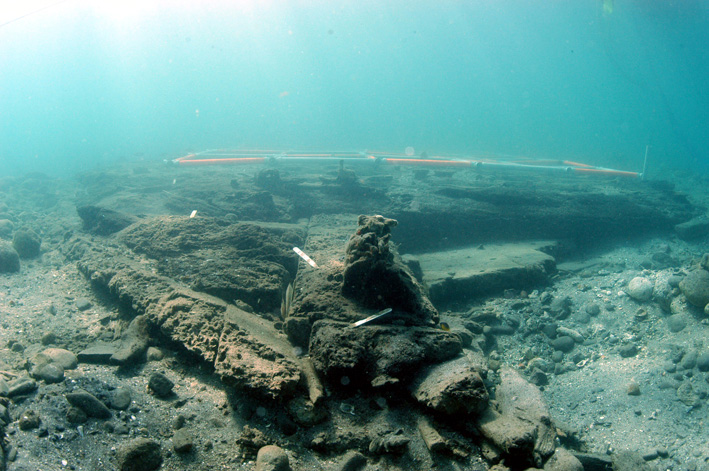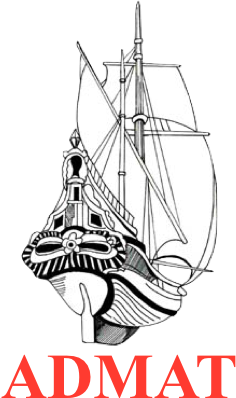
More measurements are taken. In all over 2.700 would be taken

The holes above the deadwood and keel in the centre, with floors either side and diagonal scarf joints of the double heighted futtocks in the middle top of the picture

The floor on the right hand side can be seen as damaged, which was probably done during the wrecking process

A diagonal scarf joint on the timbers, joining the upper and lower futtocks together and held in place with a trunnel

The larger end of the diagonal scarf joint can be seen on the upper right of the picture

Another station hole to be uncovered

Slowly the sand is removed to reveale the timbers

The central section missing any signs of a keelson, the bow apron on the left and 7 floors visible

As we move amidships or the rear of the remaining uncovered area, there are clear signs of the damage caused by the wrecking process, as the hull breaks

The uncovered lower bow section with the first 5 metres visible without a grid. The large apron and starboard cant frames with the port strakes are showing

The front section can be seen as the paralel cant frames join the floors

The floors and first futtocks clearly visable

View from under the grid

Randolph Hamilton of the St. Kitts and Nevis Ministry of Tourism went diving for the first time ever to see the wreck for himself

Joe Simmonds

Randolph surfaces after a memorable experience
















